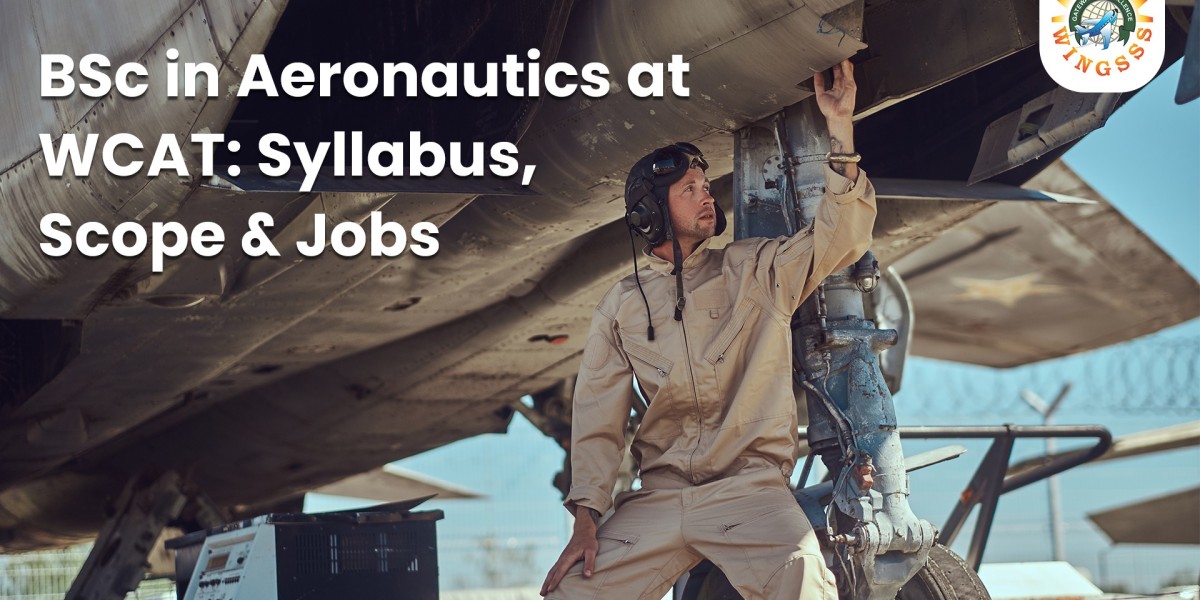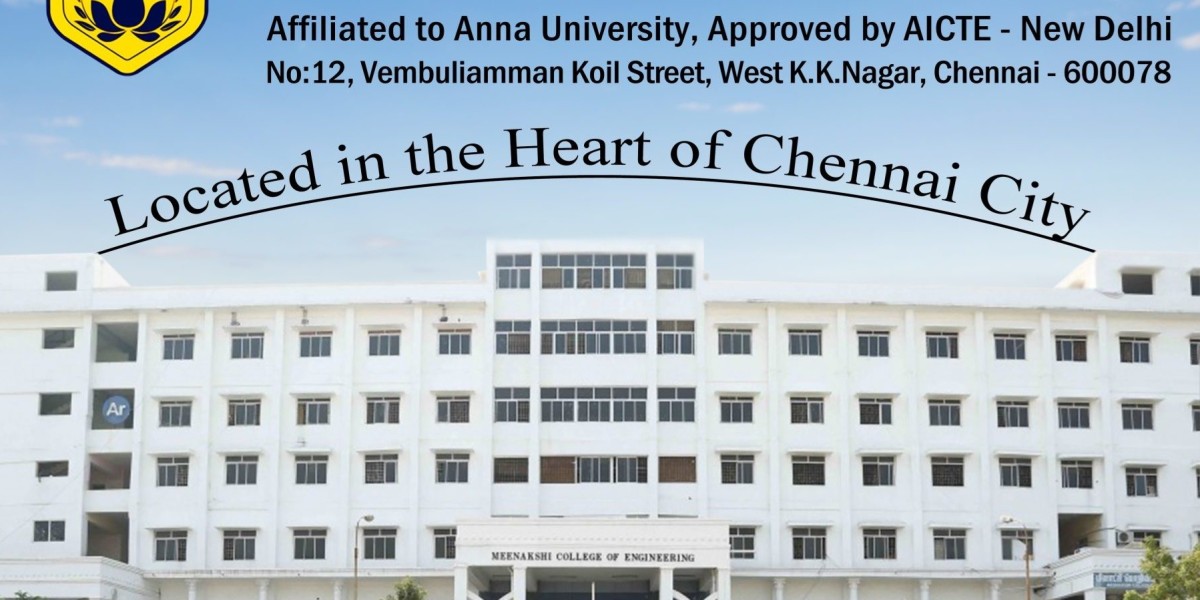Choosing a career in aviation is more than just following a dream — it’s about finding the right path that combines a strong academic grounding with real-world skills. One program that does exactly this is the BSc in Aeronautics at WCAT. This detailed guide explores its Program Overview, practical Syllabus, the Scope for graduates, and the promising Career Opportunities that make WCAT a trusted choice for aspiring aviation professionals.
Why WCAT Stands Out for Aviation Education
When you think of aviation training in India, the Wingsss College of Aviation Technology (WCAT) is often one of the first names that comes up. WCAT has over 20 years of experience in delivering quality education in Aircraft Maintenance Engineering (AME) and the BSc in Aeronautics. The college is DGCA-approved and affiliated with the University of Mumbai, which ensures every qualification is both recognised and valuable in the industry.
The campus itself speaks volumes about its commitment to hands-on learning. WCAT’s modern infrastructure includes advanced labs, multiple aircraft for live training, and experienced faculty who come from both civil aviation and defence backgrounds. From your first day, you’re not just learning theory — you’re applying it where it matters.
An In-Depth Program Overview: BSc in Aeronautics at WCAT
The Program Overview for the BSc in Aeronautics at WCAT is designed to blend academic rigour with practical training. This unique structure allows students to earn a university degree while simultaneously meeting the requirements for an AME licence under DGCA norms. This dual approach means students are equipped with both theoretical knowledge and regulatory qualifications, setting them apart from other graduates.
So, what makes the Program Overview special? It’s the combination of classroom learning with real aircraft maintenance practices. Students work on actual aircraft, engines, and avionic systems, building confidence to handle real-world tasks once they enter the industry.
Breaking Down the Syllabus: What You’ll Study
Any good aviation program needs a solid Syllabus, and WCAT ensures that every module is industry-relevant and up to date with global standards. The BSc in Aeronautics at WCAT offers two main specialisations under the DGCA guidelines: B1.1 Mechanical (Aeroplane Turbine) and B2 Avionics.
Here’s what the Syllabus looks like in detail:
Key Modules | Description |
Electrical Fundamentals | Core electrical concepts used in aircraft systems |
Electronic Fundamentals | Understanding avionics and electronic circuits |
Digital Techniques & Instrument Systems | Basics of modern digital avionics |
Materials & Hardware | Study of aircraft materials, components and their maintenance |
Maintenance Practices | Practical processes for safe aircraft operations |
Basic Aerodynamics | Principles of flight and air movement |
Human Factors | Emphasising safety and human limitations |
Aviation Legislation | Regulatory frameworks and legal compliance |
Turbine Aeroplane Aerodynamics, Structures, and Systems | In-depth study for B1.1 specialisation |
Gas Turbine Engine | The core part of aircraft propulsion for the mechanical stream |
Propeller | Important for aircraft with propeller engines |
This well-rounded Syllabus helps students become comfortable with both mechanical and electronic aspects of an aircraft. The practical sessions allow them to troubleshoot, repair, and maintain aircraft systems under real conditions.
Specialisations That Give You an Edge
One major benefit of WCAT’s BSc in Aeronautics is the option to choose your specialisation based on your interests and strengths. Let’s see how these two streams differ:
B1.1 Mechanical (Aeroplane Turbine):
Graduates focus on structural, engine, and mechanical systems of aircraft. They get licensed to repair, replace, and certify work done on these systems, including hydraulic and electrical elements linked to mechanics.
B2 Avionics:
This stream is ideal for those interested in electrical and electronic systems. B2 engineers maintain avionics, communication, navigation, and radar systems, keeping all instruments airworthy and compliant with safety standards.
Both specialisations are well-recognised in the aviation sector, giving students clear pathways to choose their role in the industry.
Scope: What Can You Expect After Graduation?
Understanding the Scope of a BSc in Aeronautics is crucial for any student before committing to the course. The aviation industry continues to expand globally, with India becoming one of the fastest-growing aviation markets.
The Scope for graduates is not just limited to airlines. Many work with MROs (Maintenance, Repair and Overhaul organisations), aviation parts manufacturers, and regulatory bodies. After gaining work experience and a Type Rating for specific aircraft, you can specialise further, increasing your employability worldwide.
Graduates with a BSc in Aeronautics also find opportunities in the defence and aerospace industries, which require similar maintenance and inspection expertise. This flexibility ensures that your skills remain in demand for years to come.
Career Opportunities: Jobs You Can Aim For
One of the strongest reasons to choose the BSc in Aeronautics at WCAT is the wide range of Career Opportunities that follow. WCAT’s placement record, with over 3,000 students successfully placed, shows how well their training aligns with industry needs.
Here are some common job roles graduates pursue:
Line Maintenance Engineer
Base Maintenance Technician
Avionics Engineer
Quality Control Inspector
Technical Officer for airlines or MROs
Aircraft Maintenance Manager with experience and licensing
Type-Rated Engineer on specific aircraft models
These Career Opportunities come with the possibility of working for top airlines, MROs, and even international aviation companies. WCAT’s strong industry partnerships ensure that students get field visits, internships, and campus drives that prepare them to step into these roles with confidence.
How WCAT Supports Your Aviation Journey
Besides a well-planned Program Overview, a detailed Syllabus, and clear Career Opportunities, what really makes WCAT special is the environment it creates for learning. From day one, students are encouraged to learn by doing. The college’s state-of-the-art laboratories, live aircraft, and diverse engine types mean there’s always something to practice on.
Students also get to learn from experienced instructors who share valuable industry insights. Leaders like Arun Laxmanrao Deshmukh, the Department Head, bring decades of defence and civil aviation experience into the classroom.
Simple Admission Process and Eligibility
Starting your journey with WCAT is straightforward. Here’s a quick look at the steps:
Complete and submit your application form.
Attend a personal interview and student interaction session with the Head of Department.
Once selected, confirm your admission to secure your place.
Eligibility:
Students must have completed 10+2 in Physics, Chemistry, Mathematics, and English, with at least 45% marks for the general category and 40% for the reserved category. Alternatively, a diploma in Aeronautical, Mechanical, Electrical, or Electronics Engineering from a recognised technical board is accepted.
Ready for Take-Off? Final Thoughts
A BSc in Aeronautics at WCAT offers you a complete learning experience — a robust Program Overview, a detailed Syllabus, a wide Scope, and plenty of Career Opportunities. Backed by over two decades of trust, modern infrastructure, and practical training, WCAT truly sets students up for success in the ever-growing aviation industry.
If you’re ready to build a future where your passion for aircraft becomes your profession, WCAT can help you make that dream fly.
Explore more at: www.wcat.in







